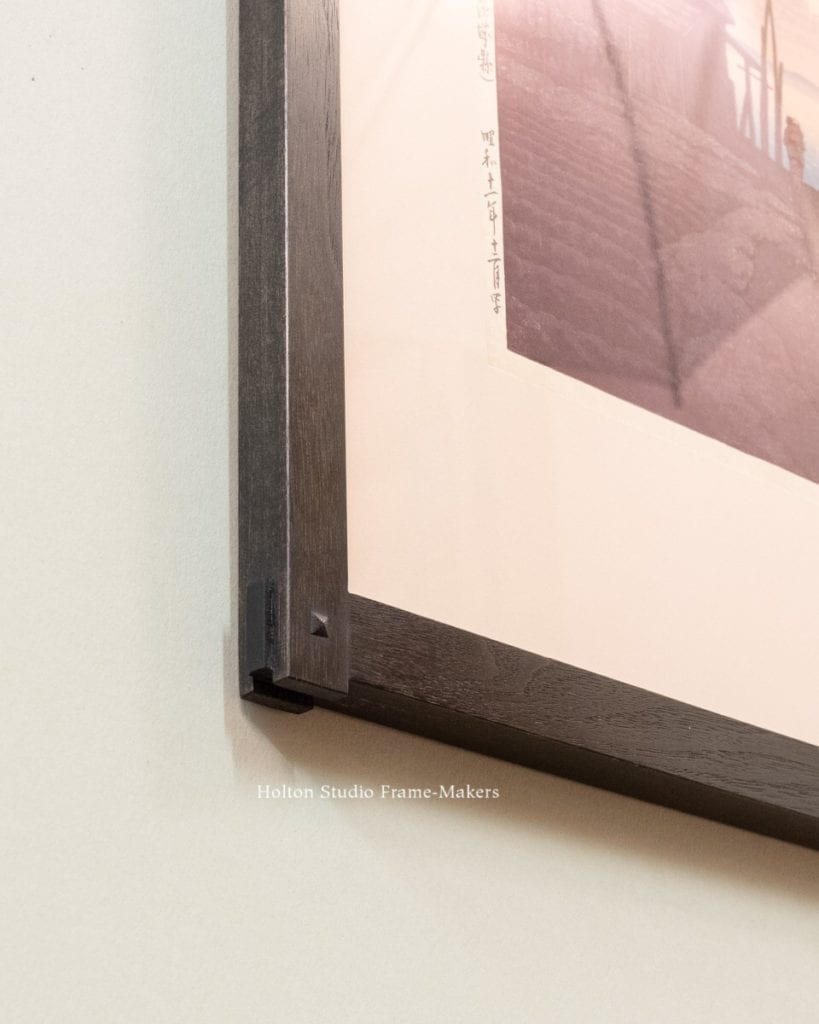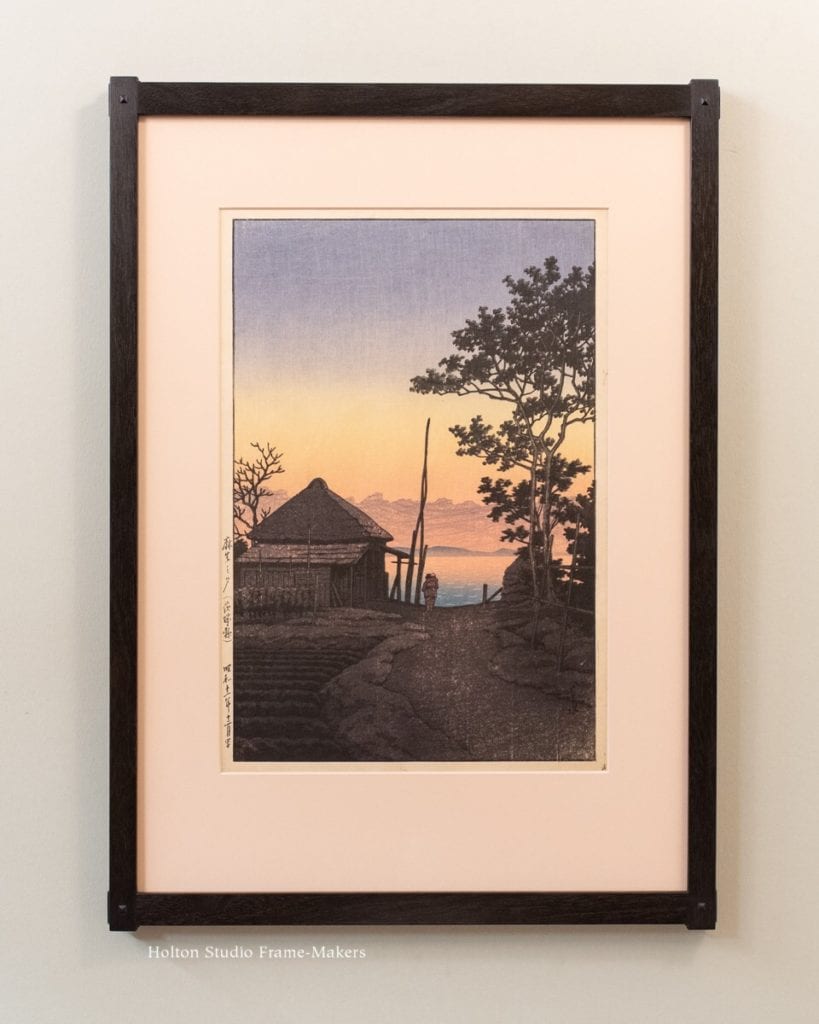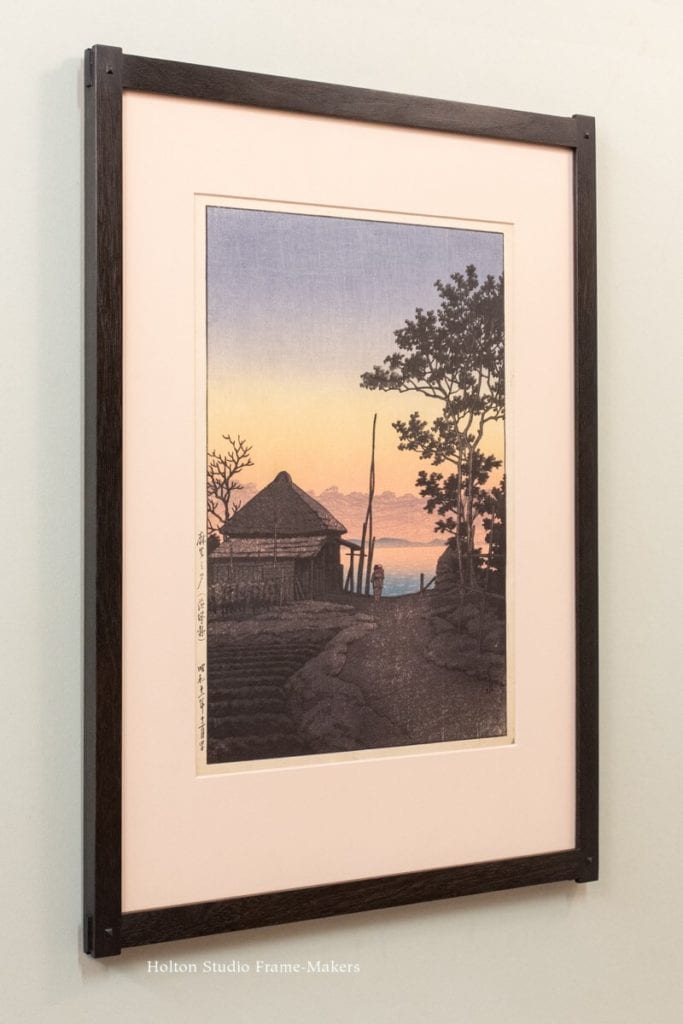In a post yesterday, I showed a print by Hasui Kawase (1883-1957), “Moon at Mogame,” in a mortise-and-tenon frame similar to our Yoshida frame. This frame too is similar to the Yoshida but instead of mortise-and-tenon joints has bridle joints (see detail). The print I’m posting here, called “Evening Asao” (1936), is also by Hasui, and is also Oban size, (15-1/4″ x 10-1/4″).
 I look forward to exploring bridle joints. The more I frame pictures, the more interested I am in the joinery—maybe because the more responsibility I take on for protecting works of art, the more truly I understand the meaning of the word art, which is derived from the Latin ars, “to join.”
I look forward to exploring bridle joints. The more I frame pictures, the more interested I am in the joinery—maybe because the more responsibility I take on for protecting works of art, the more truly I understand the meaning of the word art, which is derived from the Latin ars, “to join.”
Joinery done with integrity and pleasure is beautiful in itself. The simple but beautiful structures depicted in Hasui’s work seem built according to the same idea—which creates another kind of joinery, that between the frame and the picture. In these two cases, they are pictures of works of humanity joined beautifully to nature’s creation. Some would call it “harmony.” But that’s a word also rooted in the Latin ars, and is thus simply another word for joining.
« Back to Blog


Wonderful images – this and the previous one.
Zen. Right there. What a privilege to frame such images.
As it happens, I have been playing with ‘bridle’ joints – although ‘3D’ versions as I’ve been thinking of making a tool store and wondering how to construct the frame. I see you have secured the joint with a peg, dowel, pin or whatever you call it.
Anyway, fantastic stuff.
Marty
You’re right, Marty—a privilege indeed!